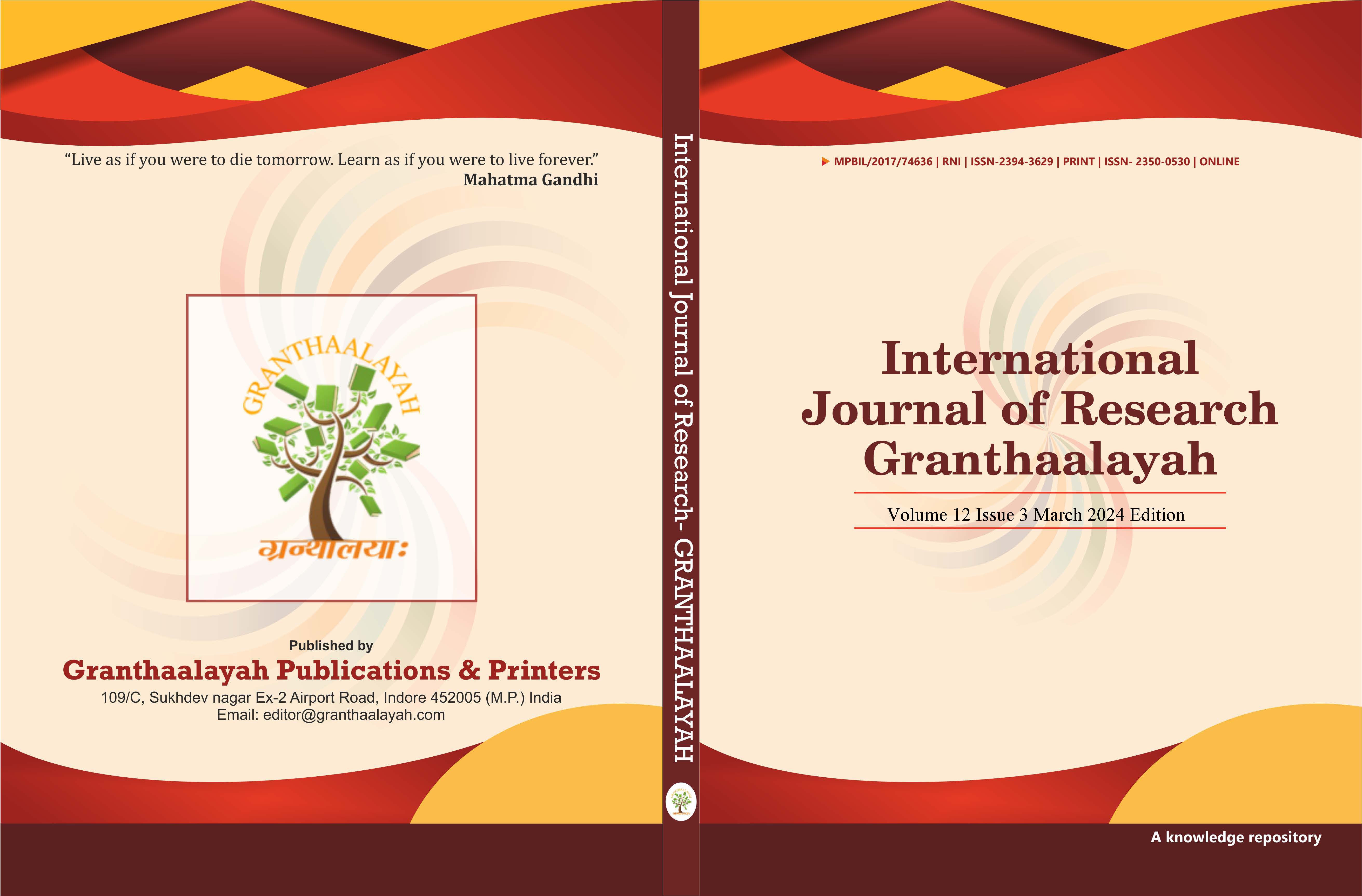SICK BUILDING SYNDROME: IMPACT OF IDEAL ROOFING ON OCCUPANTS HEALTH
DOI:
https://doi.org/10.29121/granthaalayah.v12.i3.2024.5581Keywords:
Sick Building Syndrome, Building, SBS, RoofingAbstract [English]
Sick Building Syndrome (SBS) has been defined as a “set of adverse health or discomfort symptoms that individuals experience when they spend time indoors, particularly in office buildings, and that lessen while away from the building” Apte et al. (2000). Various construction elements such as windows, floors, roof designs and construction methods can substantially increase or reduce health and safety levels. This can affect internal and external environments in workplaces. Therefore, the more sustainable the construction elements, the less hazardous or negative impacts on the building construction, the workforce, the environment, the occupants and vice versa. This study aims to use existing building construction elements and designs in North Cyprus to create a framework for developing and evaluating suitable roofing structures for adequate insulation in the North Cyprus residential buildings. This was achieved through research experiments on the construction of building elements, that is, roofing. Most SBS buildings in Cyprus have no roof structure or adequate insulation. Therefore, this experiment was carried out to prove that wrong roof systems contribute to SBS formation in buildings and the rate of SBS effects on the end users.
Downloads
References
Apte, M., Fisk, W. J., & Daisey J. (2000). Associations Between Indoor CO2 Concentrations and Sick Building Syndrome Symptoms in U.S. Office Buildings: An Analysis of the 1994-1996 BASE Study Data. International Journal of Indoor Environment and Health, 10(4), 246-257. https://doi.org/10.1034/j.1600-0668.2000.010004246.x DOI: https://doi.org/10.1034/j.1600-0668.2000.010004246.x
Arikrishnan, S., Roberts, A. C., Lau, W. S., Wan, M., P., & Ng, B., F. (2023). Experimental Study on the Impact of Indoor Air Quality on Creativity by Serious Brick Play Method. https://doi.org/10.1038/s41598-023-42355-z DOI: https://doi.org/10.1038/s41598-023-42355-z
Joshi, S. M. (2008). The Sick Building Syndrome. Indian Journal of Occupational and Environmental Medicine, 12(2), 61-64. https://doi.org/10.4103/0019-5278.43262 DOI: https://doi.org/10.4103/0019-5278.43262
London Hazards Centre. (1990). Sick Building Syndrome: Causes, Effects and Control.
Morantes, G., Jones, B., Sherman, M., & Molina, C. (2023). A Preliminary Assessment of the Health Impacts of Indoor Air Contaminants Determined using the DALY Metric. International Journal of Ventilation, 22(4), 307–316. https://doi.org/10.1080/14733315.2023.2198800 DOI: https://doi.org/10.1080/14733315.2023.2198800
Mosher, M., & McGee, C. (2013). Insulation Installation. Archicentre Australia.
Mølhave, L. (1989). The Sick Buildings and Other Buildings with Indoor Climate Problems. Environmental International, 15(1-6), 65-74. https://doi.org/10.1016/0160-4120(89)90011-1 DOI: https://doi.org/10.1016/0160-4120(89)90011-1
Mølhave, L. (1991). Volatile Organic Compounds, Indoor Air Quality and Health. International Journal of Indoor Environment and Health 1(4), 357-376. https://doi.org/10.1111/j.1600-0668.1991.00001.x DOI: https://doi.org/10.1111/j.1600-0668.1991.00001.x
Norbäck, D. (2009). An Update on Sick Building Syndrome. Current Opinion in Allergy and Clinical Immunology 9(1), 55-59. https://doi.org/10.1097/ACI.0b013e32831f8f08 DOI: https://doi.org/10.1097/ACI.0b013e32831f8f08
Obi, I. C. (2016). Strategic Management in Building Designs for Sick Building Syndrome Control: The Effect of Ideal Building Orientation. ARP International Journal of Social Science, 1(1), 13–23. https://doi.org/10.5281/zenodo.44746
Seppänen, O., & Fisk, W. J. (2002). Association of Ventilation System Type with SBS Symptoms in Office Workers. International Journal of Indoor Environment and Health, 12(2), 98-112. https://doi.org/10.1034/j.1600-0668.2002.01111.x DOI: https://doi.org/10.1034/j.1600-0668.2002.01111.x
Shuttleworth, M. (2008). Case Study Research Design.
Skov, P., Valbjørn, O., & Pedersen, B. V. (1989). Influence of Personal Characteristics, Job-Related Factors and Psychosocial Factors on the Sick Building Syndrome. Danish Indoor Climate Study Group Scandinavian Journal of Work, Environment and Health, 15(4), 286-295 https://doi.org/10.5271/sjweh.1851 DOI: https://doi.org/10.5271/sjweh.1851
Tulchinsky, T. H., Varavikova, E. A., & Cohen, M. J. (2023). The New Public Health. Academic Press. https://doi.org/10.1016/C2019-0-04675-4 DOI: https://doi.org/10.1016/C2019-0-04675-4
Wargocki, P., Wyon, D. P., Sundell, J., Clausen, G., & Fanger, P. O. (2000). The Effects of Outdoor Air Supply Rate in an Office on Perceived Air Quality, Sick Building Syndrome (SBS) Symptoms and Productivity. International Journal of Indoor Environment and Health, 10(4), 200-236. https://doi.org/10.1034/j.1600-0668.2000.010004222.x DOI: https://doi.org/10.1034/j.1600-0668.2000.010004222.x
Published
How to Cite
Issue
Section
License
Copyright (c) 2024 Ifeanyi Obi

This work is licensed under a Creative Commons Attribution 4.0 International License.
With the licence CC-BY, authors retain the copyright, allowing anyone to download, reuse, re-print, modify, distribute, and/or copy their contribution. The work must be properly attributed to its author.
It is not necessary to ask for further permission from the author or journal board.
This journal provides immediate open access to its content on the principle that making research freely available to the public supports a greater global exchange of knowledge.

























